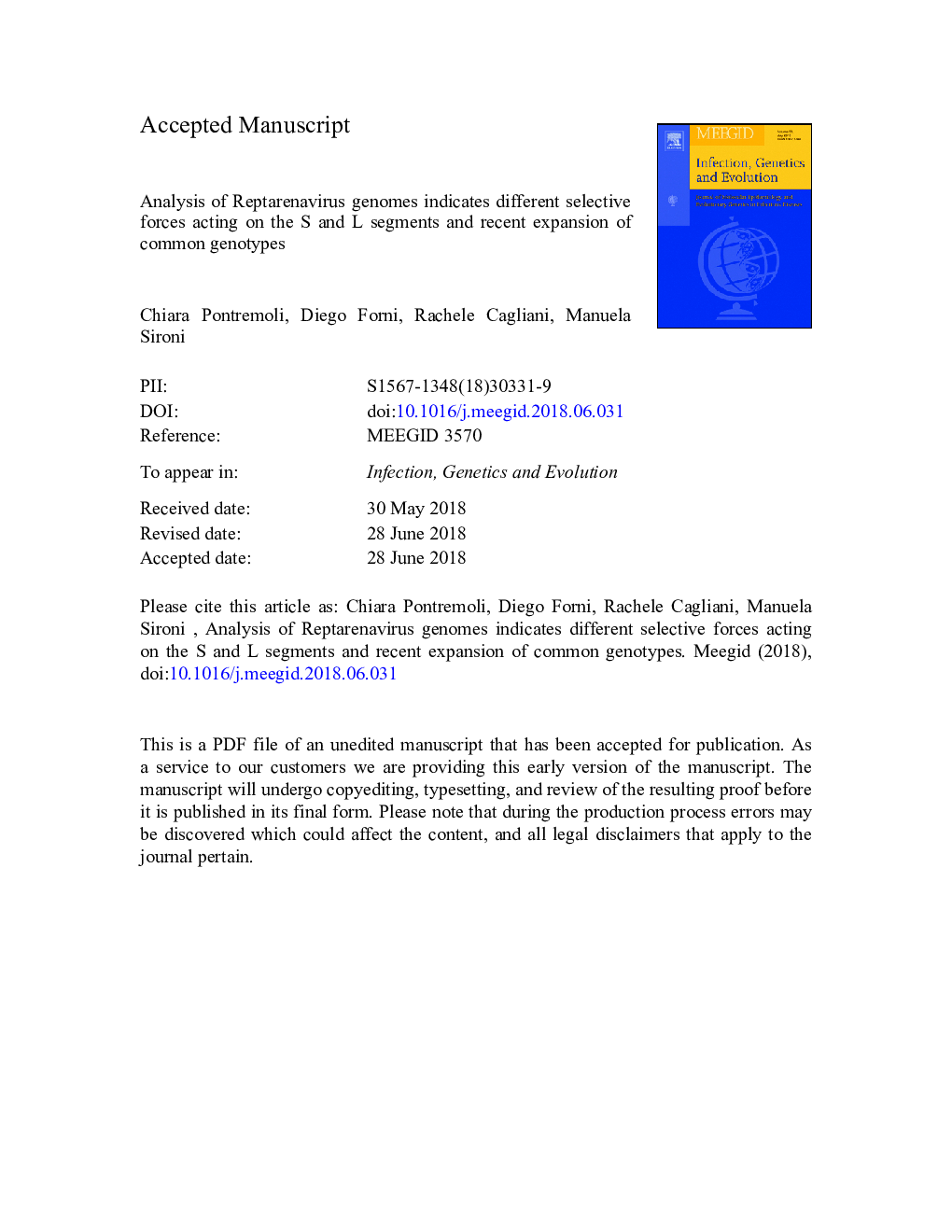| کد مقاله | کد نشریه | سال انتشار | مقاله انگلیسی | نسخه تمام متن |
|---|---|---|---|---|
| 8646566 | 1570139 | 2018 | 25 صفحه PDF | دانلود رایگان |
عنوان انگلیسی مقاله ISI
Analysis of Reptarenavirus genomes indicates different selective forces acting on the S and L segments and recent expansion of common genotypes
دانلود مقاله + سفارش ترجمه
دانلود مقاله ISI انگلیسی
رایگان برای ایرانیان
کلمات کلیدی
GPCLRTMEMERdRpPAMLGTRSLACBayes empirical BayesRNA-dependent RNA polymerase - RNA پلیمراز وابسته به RNALikelihood ratio test - آزمون نسبت احتمالpositive selection - انتخاب مثبتBEB - بی بیphylogenetic analysis by maximum likelihood - تجزیه و تحلیل فیلوژنتیک با حداکثر احتمالgeneral time reversible - زمان عمومی برگشت پذیرmixed effects model of evolution - مدل اثرات مخلوط تکاملNucleoprotein - هسته پروتئینglycoprotein precursor - پیش ماده گلیکوپروتئینGARD - گارد
موضوعات مرتبط
علوم زیستی و بیوفناوری
علوم کشاورزی و بیولوژیک
بوم شناسی، تکامل، رفتار و سامانه شناسی
پیش نمایش صفحه اول مقاله

چکیده انگلیسی
Reptarenaviruses, a genus of snake-infecting viruses belonging to the family Arenaviridae, have bi-segmented genomes. The long (L) segment encodes the Z and L (RNA polymerase) proteins, whereas the short (S) segment codes for the glycoprotein precursor (GPC) and for the nucleoprotein (NP). Presently, reptarenaviruses have only been described in captive snakes. In these animals, mixed infections are common and most infected reptiles harbor multiple S and/or L segment genotypes. Within single animals, L segments are more genetically diverse than S segments and one S segment genotype (S6) was detected in the majority of snakes. Whether the unbalanced L to S segment ratio is due to stochastic events, to distinct replication/packaging efficiencies, or to differential selective pressure is presently unknown. We addressed these open questions by analyzing the ancient and recent evolutionary history of reptarenavirus genomes. Results indicated that purifying selection shaped the bulk of reptarenavirus coding sequences, although selective constraint was stronger for NP and L compared to GPC. During the divergence of reptarenavirus genomes, episodic positive selection contributed to the evolution of the viral polymerase, an observation that parallels those on mammarenaviruses. Population genetics analyses indicated that the most common S and L segment genotypes (including S6) display markedly negative Tajima's D values, but not low nucleotide diversity, suggesting recent population expansion. In conclusion, our data indicate that the selective pressures were stronger for the L segment than for the S segment, at least during reptarenavirus genotype divergence. More recently, the population sizes of some L and S segment genotypes expanded, suggesting that they out-competed the other genotypes, which show D values consistent with constant or decreasing population size. Competition among segments may have driven the disappearance of some S segment genotypes from wild and/or captive snake populations, eventually leading to the observed L to S imbalance.
ناشر
Database: Elsevier - ScienceDirect (ساینس دایرکت)
Journal: Infection, Genetics and Evolution - Volume 64, October 2018, Pages 212-218
Journal: Infection, Genetics and Evolution - Volume 64, October 2018, Pages 212-218
نویسندگان
Chiara Pontremoli, Diego Forni, Rachele Cagliani, Manuela Sironi,